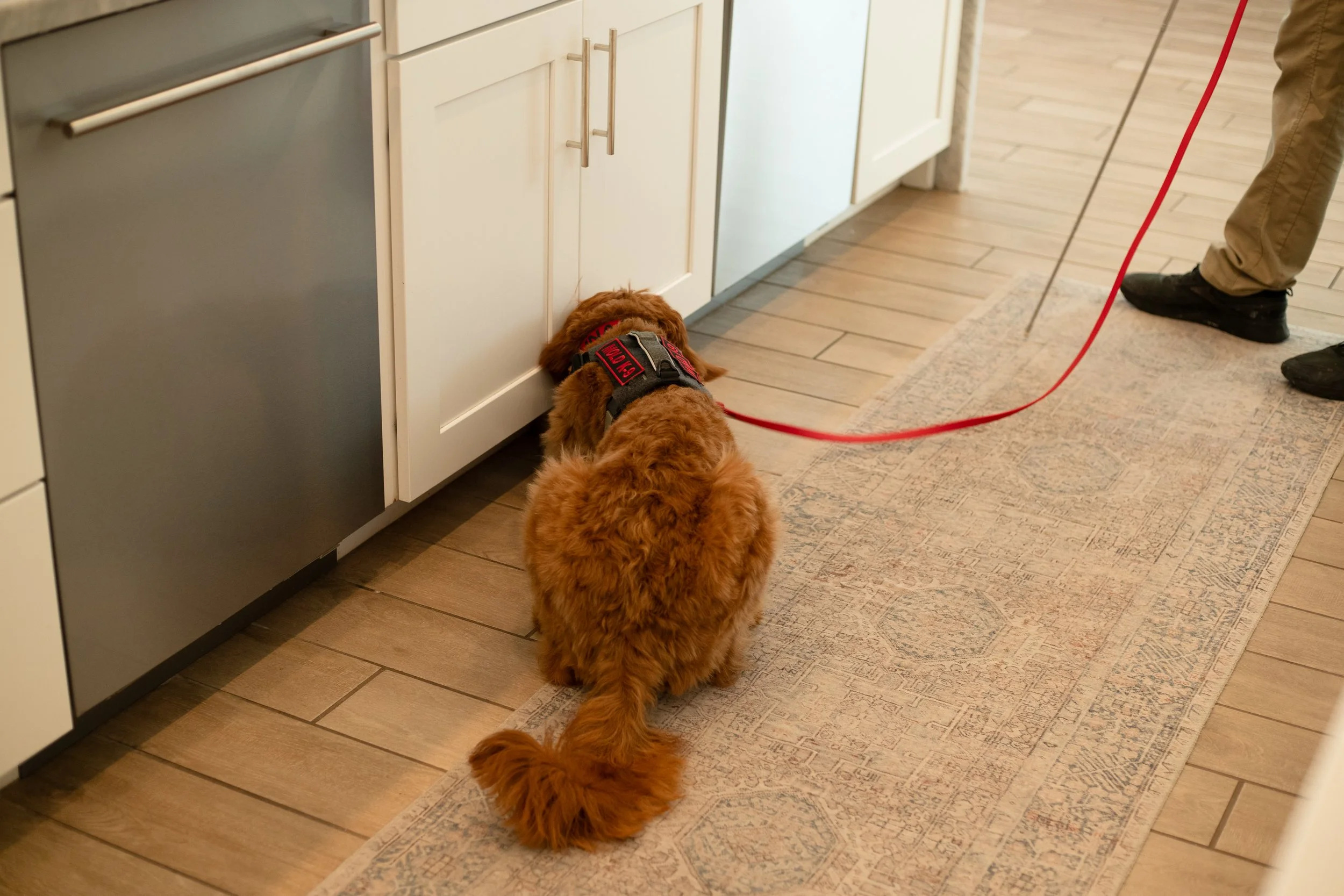
Luna the Mold Detection Dog
Meet Luna
Luna has gone through an extensive and rigorous training to be able to detect mold in hidden places. She can smell mold through walls, cabinets, and flooring in your home.
Unlike a traditional air quality test, Luna can pin point exactly where mold may be hidden. This will overall save you time and money when taking care of the problem.
As an added bonus Luna is hypoallergenic for families who may also have other sensitivities to pets
Pricing
Pricing is dependent on size of your home or commercial space. Please call for a quote.
Most common molds found in homes include:
1. Stachybotrys chartarum (Black Mold)
Appearance: Dark green or black, slimy texture
Where it grows: Cellulose-rich materials like drywall, wallpaper, insulation, carpet
Health risks: Produces mycotoxins; associated with respiratory issues, chronic fatigue, neurological symptoms
2. Aspergillus
Appearance: Varies by species—often green, yellow, or black
Where it grows: Dust, HVAC systems, walls, basements, and foods
Health risks: Can cause allergic reactions, lung infections (aspergillosis), asthma flare-ups
3. Penicillium
Appearance: Blue-green or white with a velvety texture
Where it grows: Wallpaper, insulation, mattresses, carpets, water-damaged materials
Health risks: Triggers allergies, sinus infections, asthma symptoms
4. Cladosporium
Appearance: Olive-green to black, often with a powdery texture
Where it grows: Wood, textiles, window sills, bathrooms
Health risks: Causes allergy symptoms, asthma aggravation, skin rashes
5. Alternaria
Appearance: Dark brown or black, fuzzy texture
Where it grows: Bathrooms, under sinks, around windows, and on plants
Health risks: Strong allergen; can cause respiratory problems and asthma attacks
6. Chaetomium
Appearance: Cotton-like, initially white, later turns dark gray or black
Where it grows: Drywall, ceilings, and other water-damaged areas
Health risks: Linked to neurological symptoms and allergic reactions
7. Fusarium
Appearance: Pink, white, or reddish
Where it grows: Water-damaged carpets, wallpapers, fabrics
Health risks: Can cause infections, especially in immunocompromised individuals






